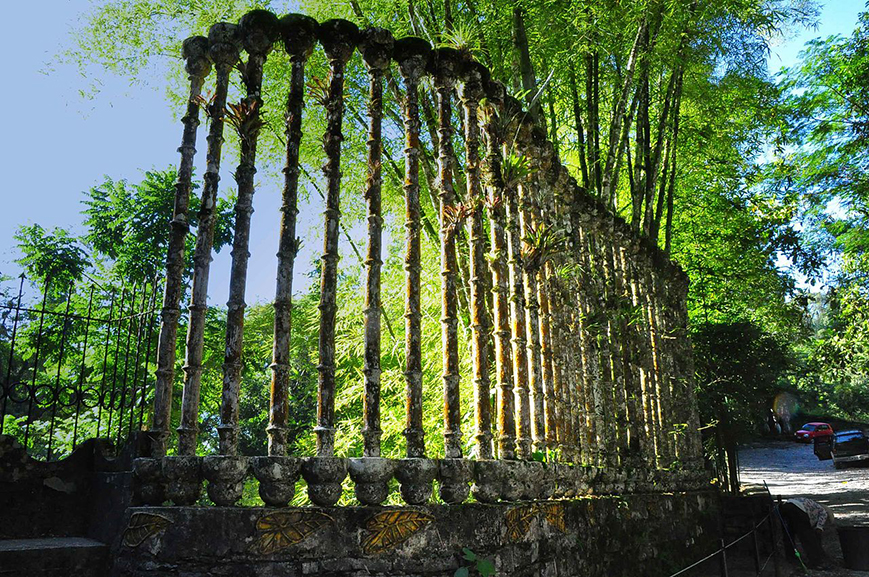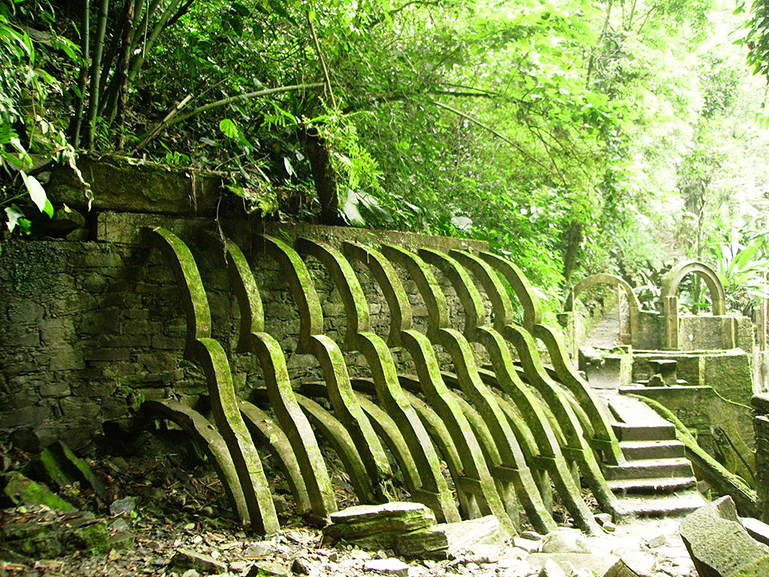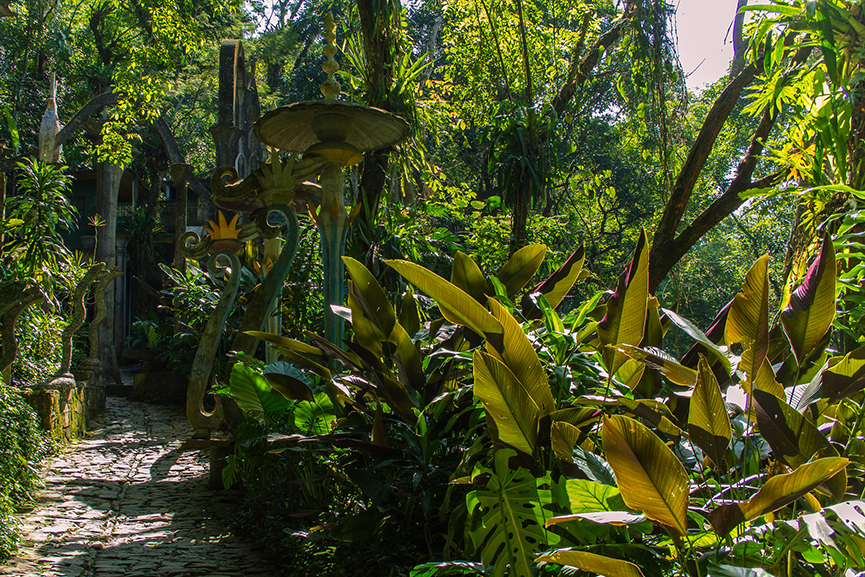One For the Bucket List - Las Pozas, Edward James's Whimsical Surrealist Garden in Mexico
The international avant-garde throughout the interwar period was very well connected. Rather than being a novelty, it was a continuity of the activities from the beginning of the 20th century. Along with artists and the interpretations of their production, those networks included patrons as well, who were crucial for supporting ideas that were often too radical to be part of the official canons. During that time, there was a man called Edward James, whose interest in art took the understanding of patronage to an unprecedented result.
Although this historical figure was best known for supporting the Surrealist production throughout the 1930s, a decade later James came up with the idea to build a garden as an embodiment of his esoteric persuasions. Around 1945, the wealthy patron encountered a perfect site in the Mexican mountains and started gradually constructing the garden named Las Pozas or The Pools.
This outstanding surrealistic place located near the village of Xilitla, a seven-hour drive north of Mexico City, serves as a manifestation of James’s apparent urge to plunge into nature by carefully modifying the space more than 80 acres wide with noninvasive concrete structures aimed to merge with the surrounding rainforest. Ever since the finalization of the project back in the mid-1980s Las Pozas stands as a peculiar example, a monument to one man’s vision, and lasting devotion to his idea.

Edward William Frank James - The Patron and Visionary
Edward James was raised in an affluent British-American family; during his childhood, he had inherited a huge estate in Sussex, as well as a large sum of money after his father and uncle died. The heir started supporting artists at an early age while still studying at Oxford. Such activity was continued during the early 1930s after James married the Austrian dancer, actress and painter, Tilly Losch, for whom he supported the acclaimed German theater director and author Bertolt Brecht and the composer Kurt Weill.
Slightly after, James focused on Surrealism and quickly became the most prolific patron of the movement. During 1937 he supported René Magritte enabling him excellent working conditions in a garage above of his house in London, while the following year James acted as a patron to Salvador Dalí.
Throughout the time, he formed an impressive art collection consisting mostly of Surrealist artworks made by artists such as Leonora Carrington, Picasso, Giacometti, Max Ernst, Giorgio de Chirico, still regarded as the finest privately-owned collection. James was so dazzled with the movement, that he even sponsored the celebrated Surrealist revue called Minotaure that was published in Paris.

The Impressive Garden in Xilitla, Mexico
While spending time in Los Angeles in the early 1940s, Edward James realized that he wants to build a garden of Eden, and his friend and cousin, Bridget Bate Tichenor, who was a Magic Realist painter, encouraged him to search for a location in Mexico. James traveled to Cuernavaca, where he hired a man Plutarco Gastelum as a guide. The two discovered the perfect spot near the town of Xilitla in the state of San Luis Potosí. Allegedly, during the exploration of the region a cloud of butterflies appeared above James and Gastélum while they were bathing in the river, which the patron saw as a magical sign.
The construction of Las Pozas finally began between 1947 and 1949, and during the first couple of decades, James was mostly focused on horticulture. In 1962 a snow blizzard, rare for this area, destroyed his collection of orchids. That made him consider building a perpetual garden and concrete structures that resembled floral elements. Ever since, the garden became a site that employed one hundred and fifty people including gardeners, carpenters, and bricklayers, all from the local community. Plutarco remained James’s right hand, and the patron frequently stayed in his family home built by Plutarco himself, a cement castle, now a hotel – La Posada El Castillo. The whole site was named Las Pozas or The Pools after the numerous pools coming from waters that flow naturally through it.
The surreal concrete structures with unusual titles (for instance - The House with a Roof like a Whale or The House on Three Floors Which Will in Fact Have Five or Four or Six) are accompanied by beds full of tropical plants, including orchids and numerous of niches, and pens that hold wild animals away from the flora and exotic birds. Mostly there are tower-like objects, as well as an array of ramps, bridges, walkways, and stairs that traverse the site.
Some sculptures were inspired by the organic forms of surrounding plants and trees, while others resonate convoluted forms present in the Surrealist artworks and those are fantastical structures such as hidden rooms, staircase leading to nowhere or totem poles.
Edward James invested more than $5 million for the construction of Las Pozas, and at one point he even sold his collection of Surrealistic art to support the project. Gradually the site came to prominence as utopian heaven of the British eccentric, and in 1978 the British television produced a documentary about James’s Las Pozas.
Video - Great Gardens: Edward James Sculptural Garden, Las Pozas, Mexico
The Relevance of Las Pozas
Edward James died in 1984 during a trip to northern Italy and Las Pozas was taken care of by the family of Plutarco Gastelum. The patrons did not provide the funds for the maintenance of the site, while the Gastelums were not able to cover the expenses themselves. They released the animals from the menagerie to the rainforest, the cultivated plants died, and the sculptures were soon overgrown.
Throughout the years, Las Pozas became the sort of a lost city erected by an ancient civilization. The structures became part of its natural surroundings creating an even more mysterious atmosphere. Nevertheless, in 2007 the government of San Luis Potosí joined by the Fundación Pedro y Elena Hernández, and the company Cemex, invested quite a sum for Las Pozas by establishing Fondo Xilitla, a foundation in charge for the preservation and restoration of the site.
The lifelong obsession of Edward James, who was described once by Salvador Dalí as "crazier than all the Surrealists together", still fascinates the visitors for the outstanding architectural and landscape domains most similar to the projects of the Spanish architect Antoni Gaudí. However, the reason why this surreal and after all visionary project defies the existing categories lies in the fact it practically levitates in green somewhere on the verge of reality and fantasy.
Editors’ Tip: Surreal Eden: Edward James and Las Pozas
Turning his back on the strictures of England, a faltering career as a poet, and his failed marriage, Edward James followed the movable feast around Europe and then headed for America and 1940s Los Angeles, where he was a member of the colony of artists and writers that included Man Ray, Isamu Noguchi, and Christopher Isherwood. But it was ultimately in Mexico that he felt at home and became an artist in his own right, creating the remarkable Las Pozas, in the remote town of Xilitla, an area abounding in waterfalls and wild orchids. Working with local Otomi Indians, he sculpted the jungle, illuminated the forest, and built parapets in the sky. Award-winning biographer Margaret Hooks tells the bizarre, often tragic tale of his life and the creation of his surreal masterpiece, captured exquisitely in photographs by Sally Mann, Michael Schuyt, Lourdes Almeida, and others.


Featured images: Las Pozas, Xilitla, photos by Rod Waddington via Flickr.
Can We Help?
Have a question or a technical issue? Want to learn more about our services to art dealers? Let us know and you'll hear from us within the next 24 hours.

